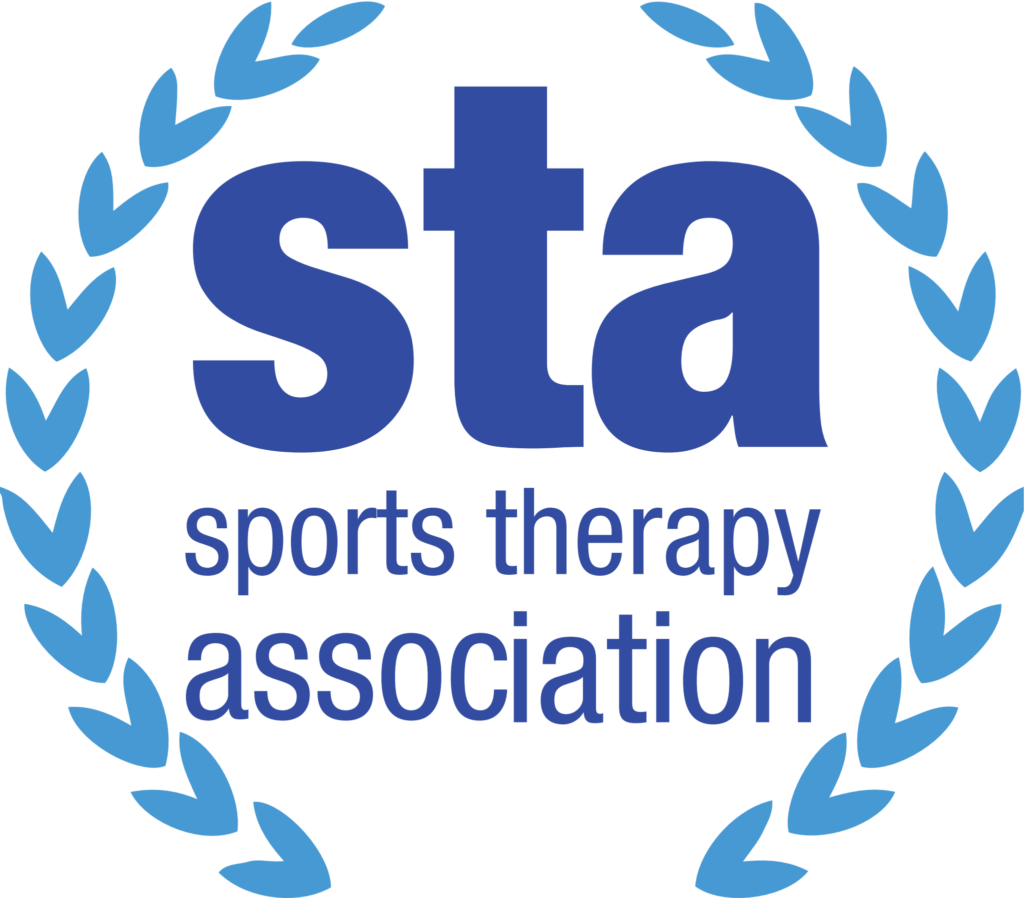A 19-year-old male Rugby player attended a physiotherapy appointment at our Bawtry Clinic presenting with a 2-week history of right hamstring pain. He reports to have felt a mild pain in his hamstring a week prior to this when sprinting but settled within a few days so returned to Rugby.
During his first game back, he felt a sharp stabbing pain in his hamstring when an opposing player jumped on his back, and as a result was unable to continue playing. Prior to this, he had no history of hamstring injuries and competed at Rugby and mixed martial arts 4 times a week.
During the assessment, there was a very large swelling with visible bruising that had tracked all through the hamstring. Slightly more range of movement could be demonstrated on a straight leg raise through the injured limb. Usually with a muscle injury, less range of movement can be demonstrated on a stretch, and an increase in range is often a sign there has been a significant injury to the tendon such as a rupture or avulsion as this leads to a loss of tension within the tendon.
[/cs_text][x_image type=”none” src=”https://sharpphysiotherapy.co.uk/wp-content/uploads/2022/08/2022-07-30-11.35.37.jpg” alt=”” link=”false” href=”#” title=”” target=”” info=”none” info_place=”top” info_trigger=”hover” info_content=””][cs_text class=”cs-ta-left”]Hamstring avulsion 2 week post injury
On palpation, significant tenderness could be found on the biceps femoris tendon and ischium bone, where the hamstring tendon attaches. A loss of tension could be found when palpating the biceps femoris tendon with the knees bent to 20 degrees and on power testing, there was around a 60% loss of power through the hamstring. His unaffected hamstring score was 42 and affected hamstring score was 16. Due to the significant findings on assessment, it is highly likely that there is tendon involvement and from our experience, a 40%+ loss of power often indicates an injury that involves the tendon.
An MRI scan confirmed there had been an avulsion of the semi membranosus and biceps femoris tendon and had retracted 7.5cm from the bone. Following a consultation with a specialist, surgery was strongly recommended to reattach the tendon, and this was performed by Professor Ernest Schilders at The Yorkshire Clinic.
We see lots of hamstring injuries in clinic from all walks of life, and it is worth noting that a high percentage of them, if managed correctly, rehab well with physiotherapy and do not require surgery or injection therapy. However, we do see 5-10 cases every year that do require surgery or PRP injections, particularly if the individual is wanting to make a return to competitive sport or activity
[/cs_text][x_image type=”none” src=”https://sharpphysiotherapy.co.uk/wp-content/uploads/2022/08/2022-07-30-11.32.11.jpg” alt=”” link=”false” href=”#” title=”” target=”” info=”none” info_place=”top” info_trigger=”hover” info_content=””][cs_text]MRI scan showing a partially tear of the biceps femoris tendon
Following surgery, the first 2 weeks were strictly non weight bearing on 2 crutches. Over the next 3 weeks, the weight bearing status was increased weekly to 25%, 50% then 75% with full weight bear encouraged by week 6. Within this 2–6-week period, a compex machine was used daily to maintain muscle bulk and prevent wastage and low-level calf and glute exercises were prescribed. Alongside this, soft tissue work was administered weekly to help dissipate post-surgical swelling and release contractures that had developed around the hip and lower back.
At 6 weeks post-surgery, a rehab program commenced specifically designed to increase strength through the whole lower limb with a specific focus on hamstring strength. This included exercises such as hamstring curls, bridging, squatting and more functional exercises such as step ups and lunges. Cardiovascular exercise was encouraged by using the cross trainer and the difficulty was continuously progressed by increasing resistance and progressing from double to single leg exercises before eventually introducing eccentric exercises. When good strength and single leg control can be demonstrated, straight line running can be introduced which is normally introduced around 8-10 weeks depending on the individual. This begins with low speed running and is progressed weekly by increasing the speed, change of rhythm and change of direction.
Like with any injury, exit tests must be achieved before returning to sport and a big objective marker that we use is power testing. In clinic we do this by using a dynamometer and we aim for the hamstring to be within 5% strength of the unaffected leg. Where possible, we use an isokinetic machine which is a slightly more aggressive test and again we are aiming for the hamstring to be within 5% strength. Other exit tests we look to achieve include running speed and ensuring that you have ran at 90% of your max speed as this is vitally important for anyone that partakes in sport where sprinting is required such as Rugby, Football or Hockey.
Why do hamstring injuries reoccur?
Many of the hamstring injuries that we see in clinic have usually been struggling for months and often tell us that this is not their first injury. By this point, they are not partaking in sport and have lost confidence in their hamstring, and the first question they ask is ‘why do I keep pulling my hamstring’? There are many reasons why hamstring injuries will reoccur, but the most common reason is that it has just not been treated!
Following a soft tissue injury, there will be an inflammatory response and the excess inflammation will sit around the injury site and bind the tissues together. This will cause pain, reduce flexibility and compromise blood flow to the scar tissue thus predisposing the individual to reinjury. Inevitably, strength levels will drop, and this must be restored before returning to sport to ensure the muscle has the capacity to deal with the demands of the sport.
Muscle injuries that extend into the tendon are more complicated as they take longer to heal and require much more input from a rehabilitation perspective. Returning early to sport before healing has occurred and/or without sufficient rehabilitation will inevitably lead to a reoccurrence. In addition, some hamstring tendon injuries do require secondary intervention such as injections or surgery and failing to identify this will lead to recurring problems and an extended return to play.
A good starting point for anyone that is experiencing recurrent muscle injuries is to not be your own physio and seek expert advice and, in my opinion, a physiotherapist is the best person you can see. We can assess the extent of the injury, refer for investigations when required, manually treat the injury and devise a rehab program that will enable you to return to sport safely and in the fastest possible time. If you are struggling with a hamstring injury and feel that physiotherapy can help you, please get in touch by filling out the enquiry form on the website.
Best wishes,
Joe
[/cs_text][/cs_element_layout_column][/cs_element_layout_row][/cs_element_section][cs_element_section _id=”9″ ][cs_element_layout_row _id=”10″ ][cs_element_layout_column _id=”11″ ][cs_element_creative_cta _id=”12″ ][/cs_element_layout_column][/cs_element_layout_row][/cs_element_section][/cs_content]













